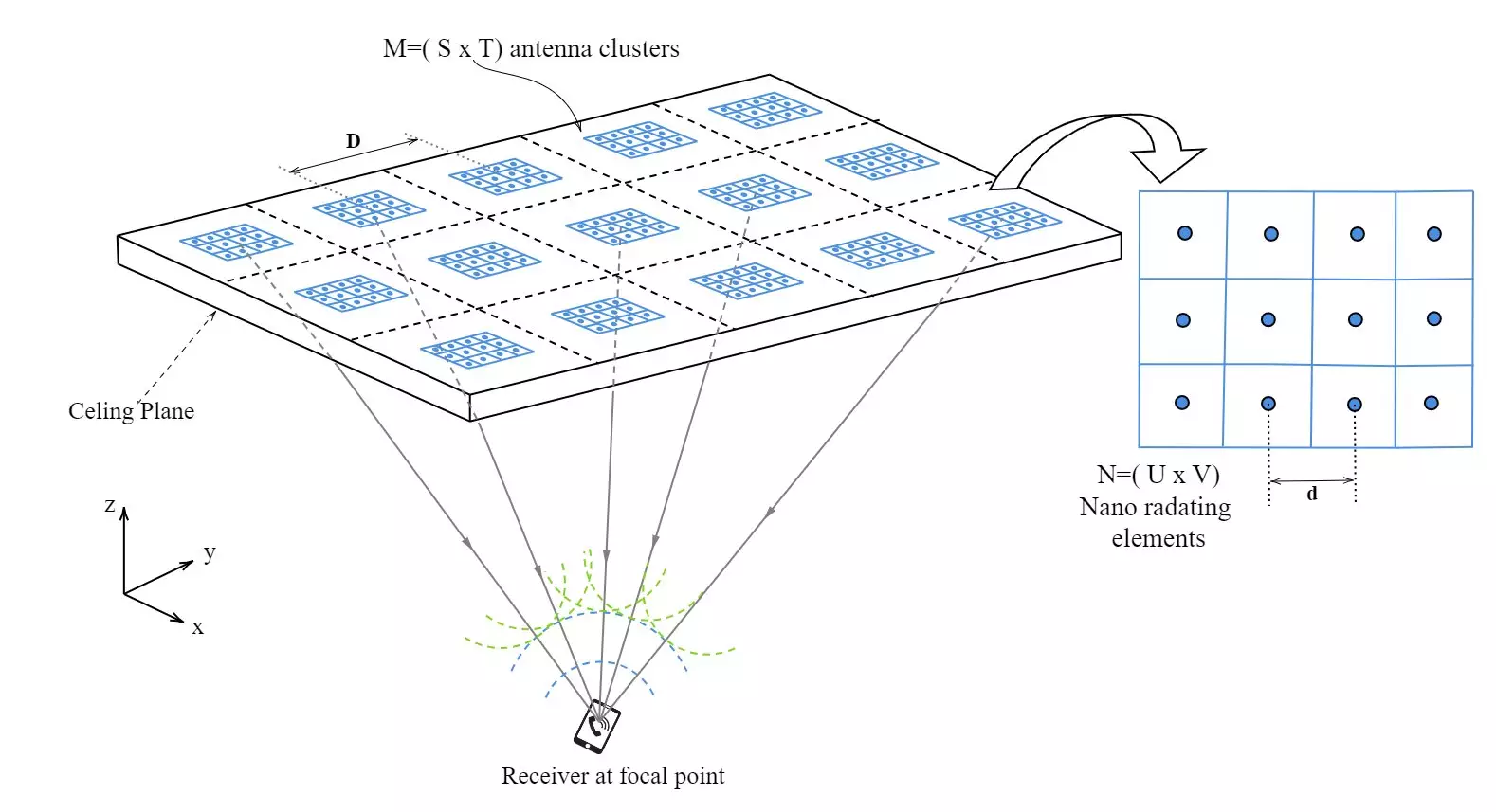In an era driven by digital transformation and an insatiable thirst for connectivity, the limitations of traditional wireless technologies are increasingly evident. Devices that once thrived on Wi-Fi and Bluetooth are now routinely stymied by bandwidth constraints and growing interference. As industries and households alike anticipate greater demands for swift and reliable communication, the need for a revolutionary solution becomes paramount. Enter Optical Wireless Communication (OWC). This emerging technology leverages the power of light, particularly infrared (IR), to address the limitations presented by conventional radio frequency (RF) systems. The research I will discuss is poised to transform expectations around indoor networking solutions.
Central to our research is a groundbreaking concept termed “phased array within a phased array.” This unique configuration draws inspiration from the complex quantum mechanics paradigm of superposition. Just as superposition allows particles to exist in multiple states simultaneously, our innovative design consists of multiple smaller optical antennas that form a nested array within a larger framework. Each antenna is strategically positioned, allowing them to function collectively for optimal signal clarity.
Unlike standard transmitter systems that suffer from obstacles disrupting their signal or experience interference, our research showcases the effectiveness of utilizing multiple transmitting clusters. This redundancy not only enhances the system’s performance in dense environments but also mirrors the interplay of overlapping quantum states. Therefore, regardless of potential obstructions, our system’s performance remains unyielding and precise.
Optimizing Performance with Dual Wavelengths
One of the standout features of our OWC system is its use of dual transmission wavelengths. This dual approach serves to enhance both signal stability and accuracy. The advantages of a multi-cluster configuration are particularly noticeable when dealing with larger distances between clusters, effectively minimizing any potential signal degradation. This method ensures that our system delivers a focused beam of communication, creating a robust link even as the spaces between components increase.
Beyond mere performance enhancement, our approach seeks to implement a level of energy efficiency that is rare in today’s wireless communication landscape. Adopting innovative algorithms, we strategically manage resource allocation to optimize energy consumption while maintaining high-quality signal transmission.
At the core of our power efficiency strategy lies the Ant Colony Optimization (ACO) algorithm. Drawing parallels from the natural world, this algorithm simulates the behavior of ants foraging for food, guiding the system to activate only those transmitting clusters that are required at any given time. Traditional wireless systems tend to operate under a blanket approach, energizing the entire network even in low-demand scenarios. Our dynamic method of selectively activating clusters not only conserves energy but proves essential in reducing operational costs—a vital consideration as we move toward more sustainable technology solutions.
The implications of energy-efficient communication technology resonate deeply with the growing global emphasis on sustainability and environmental responsibility, making our system not only strategically feasible but ethically imperative.
Our research opens up an exciting array of opportunities across diverse applications, spanning healthcare settings that require uncompromised communication security to industrial and office environments poised for improved connectivity. Importantly, the principles underlying our phased array system are not confined to infrared wavelengths alone; instead, they offer a pathway toward broader adaptability and scalability as communications technology advances.
Ultimately, this research transcends the mere enhancement of speed and reliability. It envisions a future where connectivity is seamless, efficient, and environmentally conscientious—a future where we are interconnected in ways that foster a superior quality of life across the globe. As we embark on this journey of innovation, the possibilities are vast and ripe for exploration. The road ahead is paved with potential, and as Optical Wireless Communication continues to evolve, it stands to redefine our communication landscapes fundamentally.


Leave a Reply